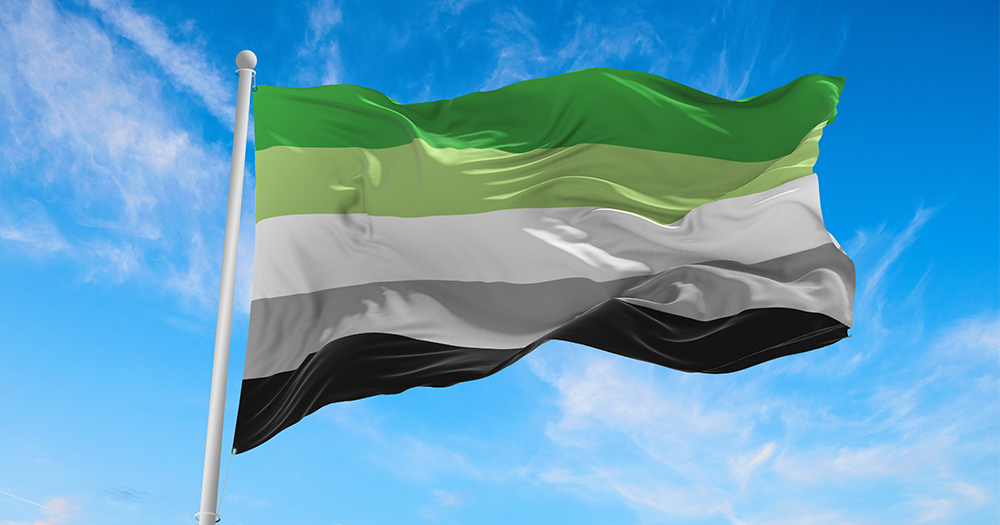Often less discussed than asexuality, aromanticism refers to people who experience romance in ways that diverge from normative social expectations. People who are on the aromantic spectrum can have any sexual orientation, but feel like they don’t experience the “standard” amount of romantic attraction that alloromantic people feel.
The queer community as a whole is well known for challenging limited ways of describing love and attraction, and the aromantic and asexual communities are bringing this a step further. Their use of language is radical and nuanced: it creates spaces for identities who have been marginalised and, at the same time, it allows for ambiguity, fluidity and inclusivity.
Aromantic people have come up with several microlabels, which are hyperspecific words used to describe their experiences. The main difference with labels such as lesbian or gay is that microlabels are generally used to define experiences rather than identities and that they can change over the course of a person’s life. Moreover, such language is open and fluctuating, which allows it to truly reflect the diversity of the community.
This week is Aromantic Spectrum Awareness Week, a term many people may not be familiar with
Sending love and support to all people in the aromantic spectrum 💚🤍🩶🖤 pic.twitter.com/cJHGRIFGI9
— The Association of LGBTQ+ Doctors & Dentists (@GLADDUK) February 18, 2025
For a better understanding of the diversity included in the aromantic spectrum, let’s have a look at some of the most commonly used microlabels.
Aegoromantic
This microlabel describes someone who enjoys the concept of romance but experiences a disconnect between the self and romantic fantasies. They may experience little to no romantic attraction, and while they may have romantic fantasies, they tend to not include themselves and be viewed instead from a third-person perspective.
Apothiromantic
This indicates someone who finds the idea of engaging in romance repulsive. Those who are apothiromantic will typically not seek out romantic relationships and dislike romantic-coded activities, such as kissing.
Aroflux
The romantic orientation of people who identify as aroflux fluctuates between experiencing it and not experiencing it, or experiencing it at changing degrees.
Cupioromantic
This describes a person who does not experience romantic attraction but still desires to be in a romantic relationship.
Demiromantic
People who identify as demiromantic do not experience romantic attraction unless they have formed a deep emotional connection with another person.
Frayromantic
Frayromantic people instead only feel romantic attraction towards people with whom they have no strong emotional bond. Once the emotional connection has formed, the attraction towards that person fades.
Grayromantic
This microlabel describes people who rarely feel romantic attraction or only feel it under specific circumstances.
Idemromantic
This describes people who experience no internal differences between platonic and romantic feelings and often categorise relationships as platonic or romantic based on external factors.
Recipromantic
Recipromantic people only experience romantic attraction after knowing that the other person is romantically attracted to them.
These are only a few of the microlabels that make up the aromantic spectrum. To find more, visit this website.
© 2025 GCN (Gay Community News). All rights reserved.
Support GCN
GCN is a free, vital resource for Ireland’s LGBTQ+ community since 1988.
GCN is a trading name of National LGBT Federation CLG, a registered charity - Charity Number: 20034580.
GCN relies on the generous support of the community and allies to sustain the crucial work that we do. Producing GCN is costly, and, in an industry which has been hugely impacted by rising costs, we need your support to help sustain and grow this vital resource.
Supporting GCN for as little as €1.99 per month will help us continue our work as Ireland’s free, independent LGBTQ+ media.

comments. Please sign in to comment.